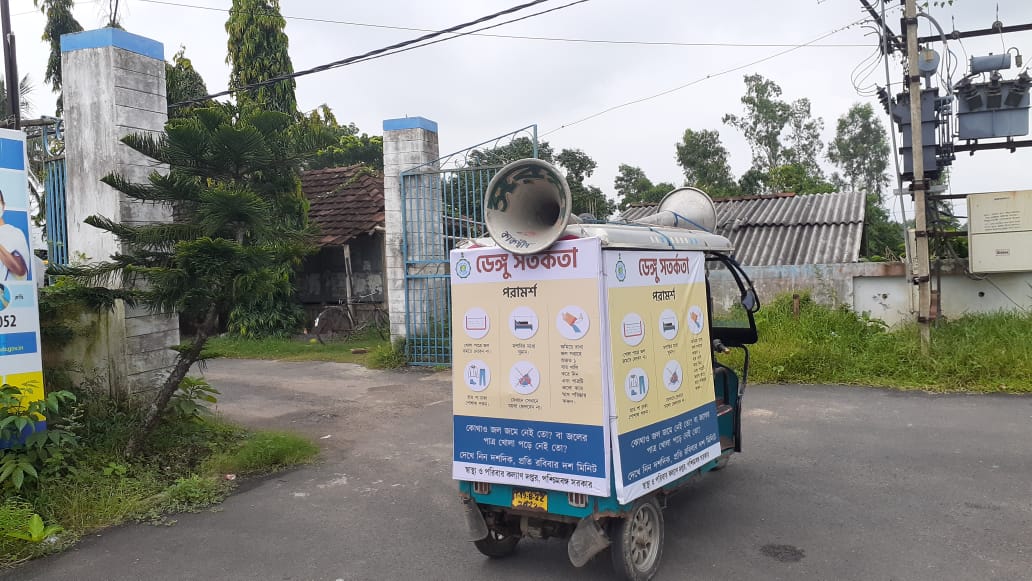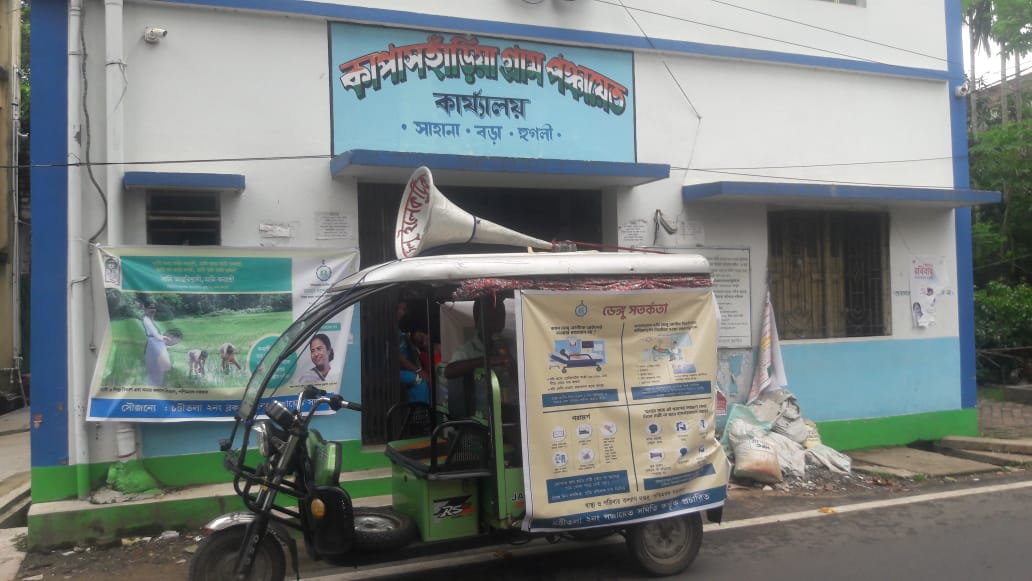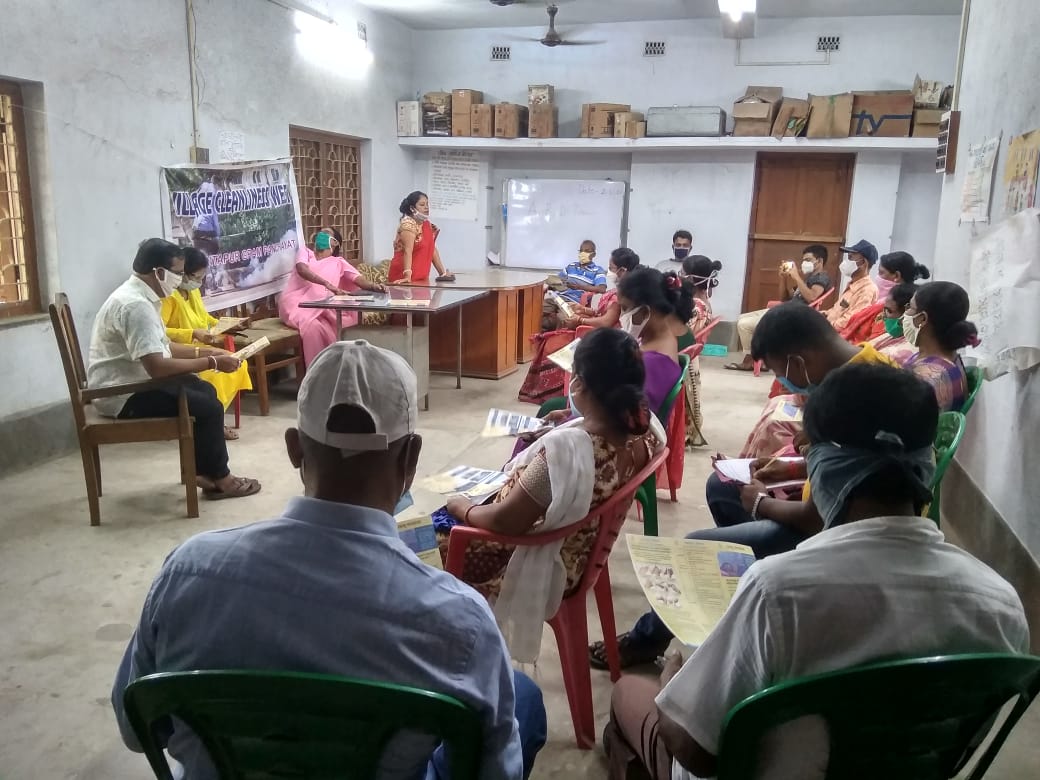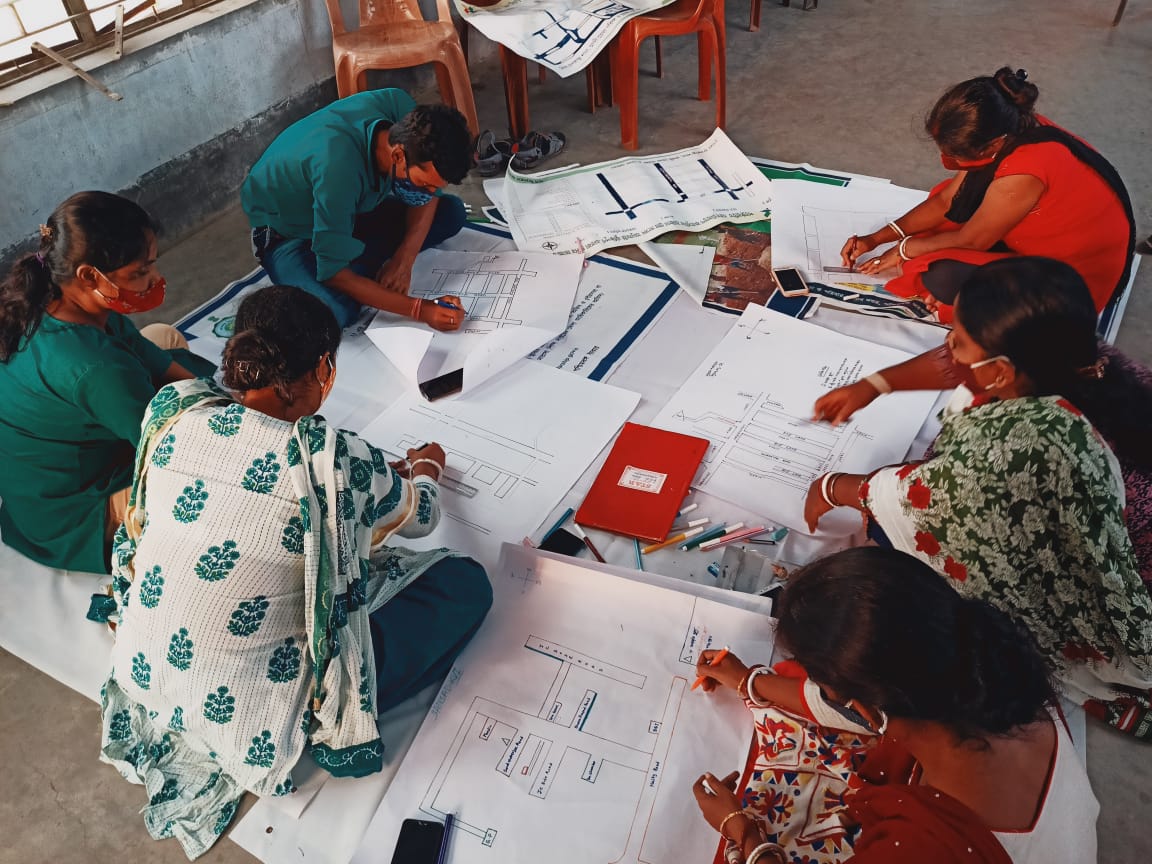
Control of Vector Borne Disease Program
- Home Control of Vector Borne Disease Program
Notable achievement:
| Total Engaged Manpower | Supervisor | VST | VCT |
|---|---|---|---|
| 57427 | 3339 | 31791 | 22297 |
Vector borne diseases, especially Mosquito borne diseases, are one of the major problems of mankind now a day. Dengue, Chikungunya, Malaria & Japanese Encephalitis are the major Mosquito borne diseases found in our State. Filariasis is also found in some parts. Vector borne diseases are not just a ‘seasonal’ threat but are perennial now.
Because of unclean and unhealthy environment, rapid urbanization, change of lifestyle, unplanned Solid and Liquid Waste Management, unnecessary water retention Mosquitoes are increasing so as Mosquito borne diseases.
However, Dengue, Malaria etc. can be fatal but all are preventable diseases. To prevent the vector borne diseases we need hence, to deal with the source (vector) of the problem and ‘kill them at the source’.
That is why this Department has adopted the scheme “Control of Vector Borne Diseases in Rural Areas”.


Objective
- To keep the environment clean and healthy
- Identification of breeding spots and destroy vectors
- To develop a habit of overall cleanliness among the community through intensive awareness generation, capacity building and waste management
Methodology:
Surveillance - Performing surveillance and awareness generation activities by House to House Surveyor/ members of Survey Team
Control - Performing control measures by the members of Vector Control Team
Supervision - Supervisor – for overall monitoring and coordination For implementation of these activities, Supervisors, Vector Survey Team and Vector Control Team have been engaged in all GPs (140 peri-urban GPs & 3199 other rural GPs).
Workforce Deployment:
On the basis of active cases for last three years, overall cleanliness and awareness of the community; H & FW Department has selected 140 peri-urban GPs for intensive vector control activities.
Workforce Deployment for 140 peri-urban GPs –
- Supervisor – One in a GP
- House to House Survey Team – One Team (2 members) per 300 Households
- Vector Control Team – One Team (3 members) per three House to House Survey Team
Workforce Deployment for 3199 other rural GPs –
- Supervisor – One in a GP
- House to House Surveyor – 8 Surveyors in a GP
- Vector Control Team – Three Teams (2 members per team) in a GP
A provision for engagement of total no. of 57427 workers has been created. They are being engaged for 30 days in a month for Rs. 175/- per day.
Responsibility of the Workers –
Supervisor –
- To coordinate between the works of House to House Survey Teams and Vector Control Teams
- To inform the Vector Control Teams regarding the areas to be managed
- Monitor if all households are surveyed or not
- Keeping stock of Vector control implements
- Take necessary action to prepare a vulnerable area map for identification and management of perennial breeding spots
- Attend training programmes organize at different levels of PRI
- To ensure monitoring at least 25% of the surveyed area or at least 6 households
- To examine reports daily and discuss with house to house survey workers
- To correct errors, if any, and take actions accordingly
- To compile report daily and upload or submit to the person who uploads the report to the “Vector Borne Diseases Monitoring System” web portal.
House to House Surveyor or Member of Survey Team -
- To identify the breeding spots and destroy them at household level
- To facilitate the members of the households about identification of larvae and alerting them about stagnation of water
- To generate awareness among the community
- To destroy unused containers and emptying and scrubbing of containers
- To fill up specific forms for survey and submitting them to the Supervisors
- Distribution of leaflet for behavioural change of community
- Inform the appropriate authority about prevalence of Fever, if any.
Moreover, a House to House Survey Team of peri-urban GP has to survey 300 households in a week. Whereas in the other GPs one surveyor has to revisit a household at least within 15 days once.


Methods of Vector Control –
Generally there are three major processes to control mosquito larvaee –
- Environmental Management – To identify and destroy the breeding spots like containers having water, cleansing clogged drain, soakpit, cesspools, garbage piles etc.
- Biological Management – Release of larvivorous fish like, Guppy, Gambusia etc.
- Chemical Management – Larvicide Spray
Vector Control Team –
- Performing control activities around the vulnerable spots on the basis of information availed information from the surveyors.
- To destroy breeding spots
- To spray larvicides in those places where breeding spots are unmanageable
- To cleansing those ponds where larvivorous fish will be released
- To fill up the specific fields of the form and submit it to the Supervisor
Training –
All workers engaged in the scheme are trained in different training programmes organized in three tiers of PRI.
Citizen’s Task Force –
Village Health Sanitation and Nutrition Committee (VHSNC) performs the responsibilities of “Citizen’s Task Force” (CTF) for Dengue prevention at Gram Samsad area. The members of VHSNC/ CTF alongwith the members of SHG visit household regularly to drive the message of inculcating the habit of cleanliness and Solid & Liquid Waste Management among the community for source reduction at mosquito breeding places.
Besides, VHSNC/ CTF discusses the status of Vector Borne Diseases of the area at every "Suswashya Dibas".
Preparation and updating of Gram Samsad wise Vulnerable Area Map, for identification of breading sources in the area, is also a major activity of VHSNC/CTF.
Intra – Departmental Convergence -
- In convergence with “Misssion Nirmal Bangla (Gramin)” target has been fixed to initiate SLWM activities in all 150 peri-urban GPs.
- All canals and drains, which are not under Irrigation and WW Department, need to be maintained by PRI. The canal related works which comes under the purview of permissible list of MGNREGS have been undertaken accordingly.
Special Initiative – Cultivation and Supply of Guppy Fish by SHGs
One of the most important and environment friendly methods of Biological Management of Larvaee is releasing Larvivorous Fish. They control Mosquito population by eating mosquito larvaee in small pond, cess poll, clogged drain etc. Generally Fisheries Department supplies the Larvivorous fish to the Blocks as per requirement from District. But the whole process is time consuming and less healthy for the fish.
In order to overcome the problems, this Department formulates a special initiative of cultivation of Guppy fish by SHGs which accelerates a steady, timely and localized supply of Guppy fish. Under this initiative, a SHG cluster cultivates Guppy fish for supplying the requirement of their own Block.
In 2021-22, seven cluster of SHGs had successfully cultivated and supplied total 10.27 lakhs of Guppy fish to fulfil the requirement of seven Blocks. State Public Health Cell in convergence with WBSRLM is implementing the activity. In 2022-23, around 52 lakhs Guppy Fish have been successfully cultivated and supplied in 68 Blocks of the State. In coming years, the target is to replicate the success in all Blocks of our State.
Village Cleanliness Week
Every 1st week of each month is observed as “Village Cleanliness Week” for generation of awareness and concerted effort among the community. During this period workers of the programme alongwith VHSNC members perform different activities on SLWM and cleansing of Government Buildings, Schools, Market Places, Religious Places, Hospital etc.
Weekly Pulse Cleaning
It takes at least 10 days to be an adult Mosquito from egg. Therefore, to reduce mosquito population, awareness generation for making a habit of weekly pulse cleaning (preferably on every Sunday) of own household and surroundings is being encouraged.
Monitoring of the Scheme
Primarily the responsibility of monitoring of the scheme is entrusted upon the GP and Block concerned. However, for better monitoring of the scheme from all three tiers of PRI as well as from State level, H & FW Department has devised a web-portal - "Vector Borne Diseases Monitoring System" - http://vvd.wbhealth.gov.in:8080/.
The Supervisor compiled the data obtained from the House to House Survey and Control activities and upload them or submit to authorized person for uploading to web-portal. The report can be viewed from all levels. The reports then analyzed at Block, District and State level for taking necessary action.
Besides, meeting of the Block level Monitoring Team (BLMT) holds on 3rd week of each month. Similarly, meeting of District Level Monitoring Team (DLMT) takes place on 4th week of each month.
Slogans
| নোংরা জমা জল সাফাই ডেঙ্গু দমনে আমরা সবাই | সপ্তাহে একদিন চারপাশ দেখে নিন |
| দেখে নিন দশ দিক প্রতি রবিবার দশ মিনিট | বাঁচতে হলে মারতে হবে মারতে হবে ডেঙ্গুবাহী মশার দল পরিষ্কারও করতে হবে যেথায় যত জমা জল প্রত্যহ মশারীর ব্যবহার করে ডেঙ্গু মশার প্রতিকার |
| জমা জল যেখানে মশার জন্ম সেখানে | বদ্ধ জলে গাপ্পি মাছ যদি দাও ছেড়ে মশার ডিম আর লার্ভা ওরাই দেবে মেরে |












